Ceramic Building Material Recording
Introduction
During 2007 and 2008 we have undertaken the recording and analysis of the manysacks of Ceramic Building Material resulting from the excavation of the villa.
These notes on that recording exercise cover:
- The terminology used in our database
- The CBM recording process at the villa(which is similar to that used by Reading Universityfor the Integrated Archaeological Data Base, AIDB)
- Some comments on the accuracy of the data
- Some of the interesting CBM finds
- Ideas on what we could do next
Ceramic Building Material is the term used for clay building material such as bricks, floor tiles, roof tilesand flue tiles. CBM is common at most Roman sites in Britain, but it is little studied. No one seems to getexcited about CBM the way they do with pottery. Why are there so few books on tiles compared to themany books on pots?
The reason may be that CBM is cheap stuff, often poorly made, finished only with a wet cloth andsometimes carelessly trimmed with a few knife strokes. No one is going to get excited about theelegance of tegula design.
But exactly because CBM was cheap and cheerful, the builders didn't mind a few defects. (The modernbuilder's slogan ‘They'll never notice!’ springs to mind. The tile makers certainly didn't waste tiles justbecause they had a few small blemishes or errors. They prodded the tiles with their boots to see if theywere dry enough to fire, they scratched them with sticks, and they scrawled the odd bit of graffiti. Tilesthat were marred with animal paw prints or children's bare footprints were not thrown away.
So from such marks on CBM we can learn a lot about the life of ordinary people around the tile maker'sworksite. Research by Dr Peter Warry indicates that we may be able to date contexts from roof tiledesign, as we can with the more exotic Samian ware. (See bibliography.)
Glossary
Brick is the term used for all flat rectangular CBM material; for example, the big floor tiles known as bipedales (two feet square) sesquipedes (one and a half feet long), probably used for bonding courses on walls, and the smaller tiles used to make the hypocaust pillars, known as pilae. Brick-sized Roman bricks are rare, and we haven't found any at the villa. Signs of burning, or soot, or mortar can indicate usage.
Flue tiles are the box tiles plastered behind the walls over the hypocaust. They were stacked like square tubes, to draw hot air up through the hot room walls, to heat the walls and to act as chimneys. They often have a characteristic combed or rollered pattern on the outside to help the wall plaster stick and we have found both square or round holes cut at flue junctions.
Tegulae are the flat roof tiles with raised sides or shoulders. They were laid side by side, overlapping the rows below like modern roof tiles, and have cut and shaped corners to help the rows fit together. The evolving design of these corners is now proposed as a means of dating tegulae, and we are providing Peter Warry with access to our corners to help build up his evidence.
Imbrex tiles are curved and are used to stop rain getting through the gaps between the tegulae. They also overlap, and are slightly conical. If they are not conical then they are probably ridge tile (see below).
Ridge tile has been included as a CBM type. Basically any imbrex shard with an obvious long straight side has been recorded as a possible ridge tile, although with little confidence as identification is difficult. Apparently ridge tiles are normally much heavier than imbrex and not conical. As a row of normal imbrex tiles, mortared in, would be adequate for the ridge, why would they bother with another type?
Pipe shards are usually only identifiable as (water) piping if they have been wiped around the curve, rather than along it, when wet. One possible pipe shard was found, still to be confirmed as it might just be an imbrex shard.
Unident(ified) is the term used for CBM that cannot be assigned to one of the above. That usually means it's a very small piece or a frost flake that has only one finished face.
Note that the CBM tesserae from the site have notyet been included in this database.
CBM recording process
On site, one or more paper record sheets for each context is used to record numbers of each type and their weight (Fig. 1).
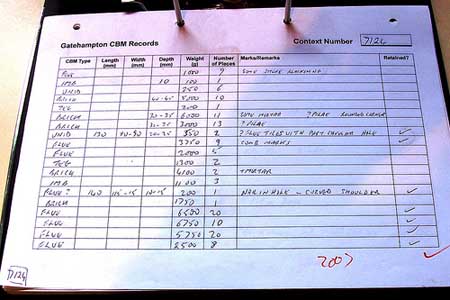
Fig. 1. A typical CBM paper record sheet
From each finds tray (or rubble sack or bucket!) the CBM is sorted into type, roughly cleaned and checked for interesting marks or anything unusual.
To reduce weighing errors, much of the CBM is weighed in batches of up to about 5kg. Interesting pieces are recorded individually and marked with their context number.We retain on site these pieces and all flue tiles for later analysis.
Any tegula corners are also context numbered and kept for Peter Warry to record in his database and marked PW in the record (Fig. 2). Some other pieces are also retained for Peter's expert opinion.
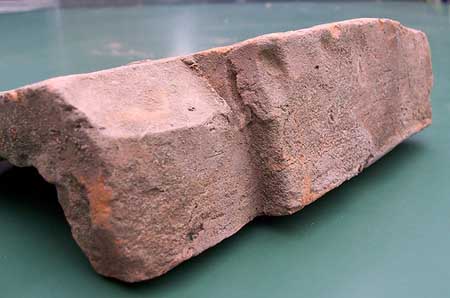
Fig. 2. Tegula Type C corner cutaway (160-260AD). Note knife cut marks and finger marks on shoulder
After recording, all the CBM material that is not to be retained is heaped outside to be re-deposited later in the backfill.
Off site, the paper record book is copied as raw data into an Excel spreadsheet.
In the Excel spreadsheet, pivot tables are used to process the raw data into summary totals for each CBM type in each context, and to generate derived data from those summaries (Tables 1 and 2).
| CBM type | Data | Total | Average weight of piece (g) |
|---|---|---|---|
| Brick | Sum of Number of pieces | 725 | |
| Sum of Weight (g) | 297,825 | 411 | |
| Flue | Sum of Number of pieces | 1,070 | |
| Sum of Weight (g) | 286,400 | 268 | |
| Imbrex | Sum of Number of pieces | 779 | |
| Sum of Weight (g) | 140,580 | 180 | |
| Pipe | Sum of Number of pieces | 1 | |
| Sum of Weight (g) | 100 | 100 | |
| Ridge | Sum of Number of pieces | 23 | |
| Sum of Weight (g) | 12,900 | 561 | |
| Tegula | Sum of Number of pieces | 1,632 | |
| Sum of Weight (g) | 480,010 | 294 | |
| Unident | Sum of Number of pieces | 483 | |
| Sum of Weight (g) | 26,600 | 55 | |
| Total Sum of Number of pieces | 4,713 | ||
| Total Sum of Weight (g) | 1,244,415 | 264 | |
Table 1. Derived data from all 2007 CBM records
| Number of retained pieces | ||
|---|---|---|
| Retained? | CBM type | Total |
| PW only | Brick | 1 |
| Flue | 1 | |
| Ridge | 6 | |
| Tegula | 66 | |
| Unident | 2 | |
| PW + Yes | Pipe? | 1 |
| Tegula | 14 | |
| Unident | 1 | |
| Yes | Brick | 26 |
| Flue | 774 | |
| Imbrex | 16 | |
| Ridge | 1 | |
| Tegula | 75 | |
| Unident | 25 | |
| Yes? | Flue | 10 |
| Total | 1019 | |
Table 2. Derived data from 2007 retained CBM
Peter Warry has pointed out that the summary totalsshow our ratio, by weight, of tegula to imbrex is 3.4 to 1, instead of the ‘very approximately’ normal roof ratio of 2.5 to 1.This probably shows that our totals include some reused tegulae, possibly to give a level course in a wall or as pilae in the hypocaust, since several pieces have mortar attached.
Accuracy
There are several sources of inaccuracy in the recording, as well as human error, and discarded unmarked CBM cannot be recovered to check doubtful entries. But as only generalities can be deduced from bulk find records, the accuracy of recording is within acceptable limits. The key error sources are:
- Not all CBM is actually collected from a trench – a quick look at the spoil heap on any site shows that. But hopefully only a small fraction of the total CBM weight is lost in this way, and that fraction is mitigated by other errors that tend towards overweighing.
- Sorting into CBM types is quite accurate, after a bit of experience. Small shards can be identified if even a tiny finished surface is there, even in a dark polytunnel. The assumption is that the bulk of thematerial will tend to cancel out errors in typing – although typing of ridge tile and pipe shards mightbe more error prone.
- The sorted CBM is weighed using a small spring balance.The scale reading is judged to about +/-100g.Given the CBM bulk, and multiple weighing, this is acceptable.
- The main problem with weighing accuracy is field conditions. Pottery soaks up water like a sponge, soa wet day can notably increase recorded weights. And although loose dirt is brushed off the CBM, some mortar, cement and other materials are bound to be included in the weight. But such accretions might be significant and would anyway take a serious effort to remove. Once again, sheer bulk makes the error acceptable.
Interesting finds
Human and animal prints are quite common, and show that animals, children and adults were moving about wherever the tiles were laid out to dry (Figs 3 and 4).
Generally the paw prints are from domestic animals, mostly dogs, which suggests that the tiles were madeand dried near the farm. This may also indicate that the tilers were part time farm workers.
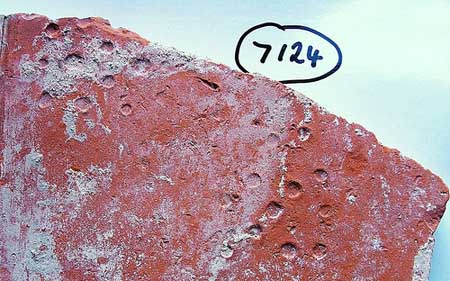
Fig.3. Hobnail shoe marks
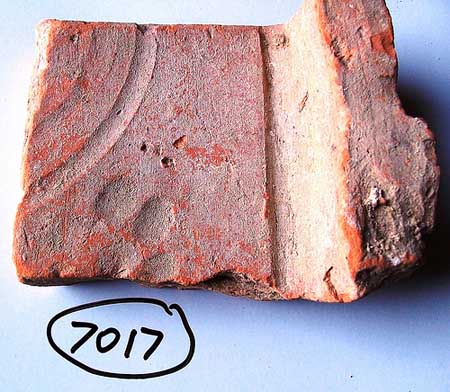
Fig.4. A dog paw print. Note the claw marks.
The star CBM find in 2007 was the nearly whole tegula from trench 7 (Fig. 5). This measures about 16in[38.4cm] by 11.5in [27.6cm] and is smaller than the usual 18in [43cm] tegula. There were also some largepieces of pilae indicating a pila size of about 8in [20cm] square.
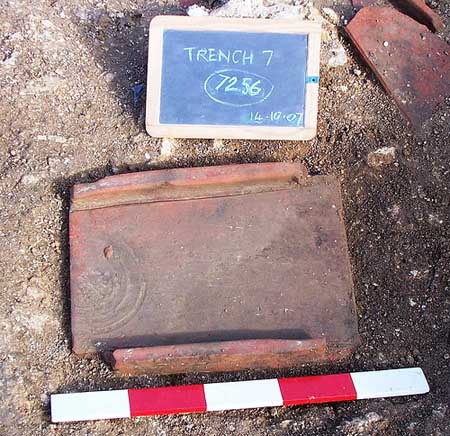
Fig.5. A whole tegula (bottom left shoulder is missing)
We have had a few tegulae that are curved in one plane, perhaps to fit on a barrelled roof, but more likely justsuffering from potter's droop, since they were almost certainly stacked on their sides in the kiln.We havealso had four tegulae with in situ roofing nails. (As an aside, the Romans appear not to have recycled theirnails.You'd think that the iron would be worth saving, even without the several minutes needed to makeeach new nail by hand. Any suggestions?)
Very few tiles with firing temperature errors have been seen so far. Too cool a kiln results in a bluesandwich layer in the red fabric, too hot results in a hard purple fabric like an engineering brick. So thevilla tilers seem to have been quite skilled at their craft.
What's next?
The raw data recording is being continued in 2008, as even more CBM is lifted. This will be transferredto the database to refine the summary data.
CBM records from earlier years will also be copied to this database as time permits.
Starting later this year, we plan to assemble a reference collection of CBM types at the villa –particularly for the flue tiles.
Bibliography
- Brodribb, G. (1987) Roman Brick and Tile. Alan Sutton Publishing. A concise typology of many types of CBM.
- Warry, P. (2006) Tegulae: Manufacture, Typology and Use in Roman Britain. Oxford: Archaeopress. Primarily about tegulae, a thorough treatment including tile manufacture, roof construction and economics ofthe Roman brick industry and dating proposals based on design.
John Hefferan 2008
This article was first published in SOAG Bulletin No.62 (2008). The SOAG Bulletin is published yearly and is freeto members.

